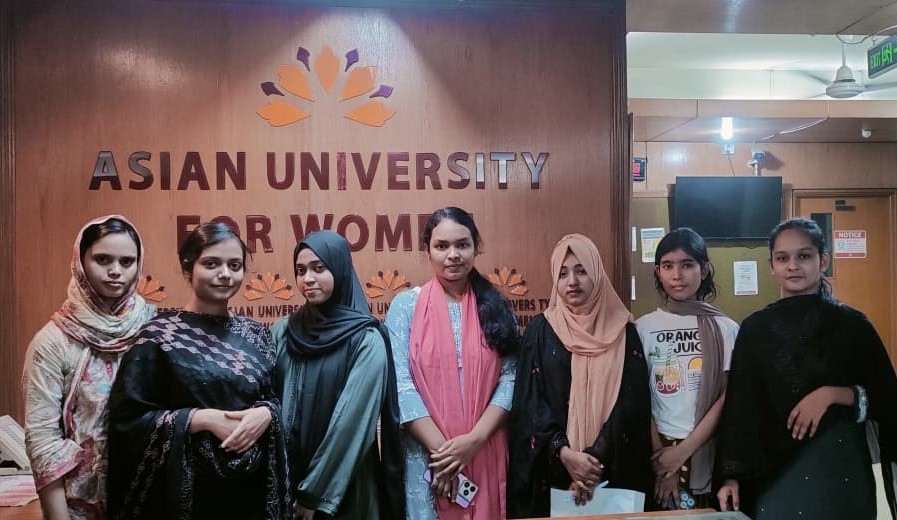By Sheahan Nasir Bhuiyan
Bangladesh only started developing a national Information Communication Technology (ICT) strategy in 1997. The sector was identified as a “thrust” sector back in 2002 but the real push came in 2008 from the current ruling party’s political manifesto of Vision 2021 which aims to make Bangladesh a middle income country by 2021. The core foundation of achieving Vision 2021 was laid through the application of digital technology. Commonly referred to as “Digital Bangladesh”, the government proceeded to implement a large number of projects to digitize government operations as well as to raise public awareness about the benefits of using ICT. This initiative seeks to transform Bangladesh from one of the world’s poorest countries into a knowledge based society supported by a world class technology backbone.
Here are some projects that are already underway
01. Leveraging ICT for Growth, Employment and Governance Project (LICT)
Launched in January 2013, LICT is a project run by the Bangladesh Computer Council (BCC) to develop a vibrant and healthy ICT structure and promote IT enabled services within five years by leveraging ICT for economic growth and competitiveness.
LICT aims to catalyze the growth of the IT sector for creating employment and diversifying exports. It also aims to finally be rid of the archaic paper pushing model used by government employees and replace it with digital technology. LICT will push for new policies and guidelines to regulate the use of such technology and also provide training to build the capacity of government employees.
Through such activities, LICT will create 34,000 skilled new jobs. Government employees will be able to engage in shared IT hosting and remote conferencing and reduce the time taken to accomplish tasks.
This will promote Bangladesh’s IT capabilities to the rest of the world and attract foreign business.
02. Establishment of Computer and Language Training Lab in Educational Institutions all over the Country
Recognizing the fact that most of the school going children in Bangladesh do not have access to computers and modern technology, the Government launched this project in January 2015 to establish specialized computer labs in educational institutions across the country to speed up the expansion of computer education and develop language competency. It is designed to arm the students with employment skills to compete in not only the local job market, but also international markets as well.
The project is being implemented by the Directorate of Information and Communication Technology and by December of this year, will establish computer labs in 2,000 schools and colleges and a Language lab in each district, all powered by high speed internet. The computer labs will employ 1,000 teachers who will teach 9 different languages (English, French, Spanish, German, Russian, Mandarin Chinese, Arabic and Korean) to students.
03.Development of Bangladesh Hi-Tech Park Authority (BHTPA)
BHTPA is an agency set up by the government to establish, manage and operate technology business parks throughout the country, similar to Malaysia’s Multimedia Super Corridor. These will be areas dedicated to providing adequate infrastructure support services to create an environment for the development of need based industries. The Hi-Tech Parks will develop indigenous technological capability for the development of local industries. The park will also produce state of the art technologies which will be exported into foreign markets.
The Government wants Bangladeshi manufacturers to start manufacturing smartphones, tablets and other similar tech devices, millions of which are imported into Bangladesh every year. By moving production to these parks, not only will it create thousands of jobs, but will also make the nation more competitive in international markets. Each park will have state of the art training facilities to develop Bangladeshi youth.
Projects by the BHTPA include:
• Kaliakoir Hi-Tech Park
• Jessore Software Technology Park
• Sylhet Hi-Tech Park
• Mohakhali IT Village
• Barendra Silicon City
04. Tier IV Data Center
The Kaliakoir Hi-Tech Park will play host to another massive investment in the ICT sector, namely the establishment of a Tier IV Data Center. For those who are not aware of what a Tier IV Data Centre is, very briefly, it is a data center which comprises of all the functions of Tiers I-III and adds more. According to Vivek Gite (2008) on nixCraft, Tier IV data centers were “designed to host mission critical servers and computer systems, with fully redundant subsystems (cooling, power, network links, storage, etc.) and compartmentalized security zones controlled by biometric access control methods.”
For a comparison between Tier I and Tier IV, a Tier I data server has a single uplink and servers and is used by small businesses or shops. Tier IV on the other hand, have fully fault-tolerant components and everything is dually powered. Tier IV Data centers are used by governments to run countries.
According to Financial Express BD, the data center being built in Kaliakoir Hi-Tech Park will be the seventh largest of its kind in the world. The State Minister for Finance and Planning, M A Hannan claimed that the capacities of existing data centers are not sufficient to meet the demand of the various Government agencies. This data center would meet the current demand and provide a highly secure building for holding Government data.
05. Skill Development for Mobile Game and Application
The saying goes “all work and no play makes Jack a dull boy”. The Bangladeshi government did not want to be Jack and in August of 2016, launched the “Skill Development for Mobile Game and Application” project to gain a footprint in the global gaming and application markets.
It is estimated that by the end of 2016, the global mobile gaming market will be worth approximately
$36.9 billion, with the lion’s share going to the United States and China. The market is expected to grow even larger and the government, rightfully, wants a share of the pie.
In a local context, out of the 63.3 million internet users in Bangladesh, 59.7 million of them use their mobile phones to access the internet. In the local market alone there is a huge potential for local developers to make it big. Some local games like ‘Heroes of 71’, ‘Tip Top Ant’ and ‘Dragon Village’ were downloaded by millions of users according to NewAgeBD.com.
However, despite the popularity of these games, the majority of the market here is dominated by foreign developed apps and games. This project seeks to end their dominance by creating 8,750 app developers and 2,800 gaming animators by December 2017. In order to do that the project will develop seven Mobile Apps and Game Development Academies at the divisional level, while Mobile Apps and Games Labs, App Testing Labs, and Training Points will be established in educational institutions across 30 districts.
The Future
The government has more ongoing projects and a host of projects lined for the future as well. They are actively seeking investments from developed countries.
Bangladesh wants more investments into the Hi-Tech Parks from the United States. Investors in Hi-Tech Parks will be incentivized by tax breaks on income, export and import for the next ten years. Bangladesh has already signed Memorandum of Understandings with the US to build more start-ups in the IT sector.
The recent visit from President Xi Jinping of China focused on increasing Chinese investments into the IT sector in Bangladesh. President Jinping, along with Prime Minister Sheikh Hasina laid down the foundation stone for the Tier IV Data Centre in Kaliakoir Hi-Tech Park. On top of that, the governments have signed MOUs where it was agreed that the Chinese government will provide loans for building a National Infra-Network for the Bangladeshi Government, and establishing a project titled Digital Connectivity and Modernization of Rural and Urban Lives in Bangladesh through ICT.
The sheer size of the Bangladeshi population, coupled with the fact that internet usage is on the rise, means Bangladesh is a very attractive location for investors. The government is doing its part by offering lucrative investment options. If things go according to plan, who knows, maybe the next Mark Zuckerberg could be found Bangladeshi!
Uttam Kumar Paul
Secretary General BASIS
What is the real scenario in this area?
ICT is the backbone of any digital initiative, which covers the immense area of information, communication and telecommunication technology. It is also a combination of physical backbone and intellect. Since 2002, the ICT sector in Bangladesh is recognized as one of the “main sectors” in terms of potential transformations, employments opportunities,industry evolution, and refining governance. Over the past three decades, Bangladesh’s ICT industry has been developing slowly through its software, digital services, and e-commerce business. A large portion of the software and IT services of Bangladesh serve various companies in Europe, North America, and East Asia. We believe that South Asia is another promising market for us. Our emerging exporters and startups have given sufficient evidence of their qualifications. With the availability of our abundant human resources, Bangladesh is ahead of the others in many ways. In fact, Bangladesh is now considered to be among the next high prospect destinations in the segment, with rave reviews from AT Kearney, Gartner, Goldman Sachs and a host of others. The fundamentals of the industry are summed up in the diagram below.
The industry has seen strong growth over recent years involving 250,000 people, with 1,500+ companies. On top of this, there are freelancers registered in platforms like Upwork, Elance who have gained a reputation for providing quality service at affordable costs; although at the lower or mid-tier job categories. Our country is considered as one of the leading countries in outsourcing and ranked in the top 30 countries in the Gartner Outsourcing ranking. Overall, it can be said that ICT industry of Bangladesh is going on the right track at the moment.
ICT Sector At a Glance

What is the present trend of growth?
The Bangladesh ICT industry may be separated into two groups; one being IT and another being IT-enabled services (ITES). Furthermore, IT enabled services can be classified in application services which involve systems integration, infrastructure development & consultation and Engineering services which involve the development and testing of hardware and software. Almost 1,500+ IT/ITES companies are currently registered in Bangladesh. More and more are coming in line and mostly are involved in ICT value chain services, extending from custom-made applications & maintenance to BPO services. The local requirement from banking, telecom, pharmaceutics, RMG and Textile sectors has also built up the capacity in the sector for export services. The research data shows the trend of contribution from different activities on ICT sector with overall 55% income generating from customized software development.
Currently, the top outsourcing destinations are USA, UK, Canada and Australia.
Though, current contribution from ICT sector is dwarfed by the billions earned by the RMG sector, there is huge scope for enormous expansion in IT to build a Digital Bangladesh, to move into the digital domain which will generate employment and create numerous benefits in different sectors across the country.


What are the challenges?
We’ve seen great progress but the industry still has a long way to go. The essentials such as government will, private sector capability, talent availability and the necessary infrastructure are already in place. Different authorities are patronizing various activities but the major challenge is inadequate co-ordination. Other challenges are speedy development in improved communication, uninterrupted power supply, industry-friendly infrastructure, producing industry ready ICT Skills etc. Limited financial resources, inadequate public-private partnerships are also important points to focus on.
We heard that after the visit of the Chinese president there are possibilities of growing our IT?
During the visit of the Chinese President, there were positive discussions between ICT Division of Bangladesh and Honorable President of China. It was discussed and mutually agreed that there is vast opportunity to work on ICT infrastructure and other required facilities to build smart cities in Bangladesh. So, yes there are possibilities of growing our IT further.
What is your comment on our future of IT industry?
We still have a long way to go before we reach the $1 billion mark by 2018 and $5 billion mark by 2021. As I mentioned before, the basics such as government will and private sector capability, and the enabling infrastructure are already in place. However, the local market is almost untapped. If we can make slight changes in our existing tax & vat rules related to IT services and customized finished products, our local IT industry itself will become a much larger market. In the coming years, the government agencies will be the major buyers of IT & ITES in order to tone with the vision of digital Bangladesh. We just need the right set of structured actions and Bangladesh can jump into the province of IT/ITES outsourcing heavyweights by leveraging its natural advantages in many ways to other countries. Moreover, the local market is almost untapped.
















